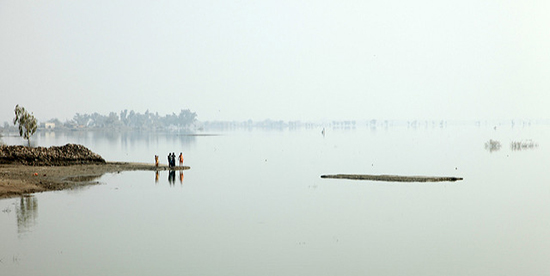Is adaptation reducing vulnerability or redistributing it?

Summary
As globalization and other pressures intensify the economic, social and biophysical connections between people and places, it seems likely that adaptation responses intended to ameliorate the impacts of climate change might end up shifting risks and vulnerability between people and places.
Building on earlier conceptual work in maladaptation and other literature, this article explores the extent to which concerns about vulnerability redistribution have influenced different realms of adaptation practice.
The review leads the authors to conclude that the potential for adaptation to redistribute risk or vulnerability is being given only sparse – and typically superficial – attention by practitioners. Concerns about “maladaptation”, and occasionally vulnerability redistribution specifically, are mentioned on the margins but do not significantly influence the way adaptation choices are made or evaluated by policy-makers, project planners or international funds.
The authors suggest that, in research, the conceptual work on maladaptation is yet to translate into a significant body of empirical literature on the distributional impacts of real-world adaptation activities, and argue that this calls into question the current knowledge base about adaptation. They also suggest that these gaps are troubling, because a process of cascading adaptation endeavors globally seems likely to eventually re-distribute risks or vulnerabilities to communities that are already marginalized and vulnerable.
The article concludes with a discussion of the implications that the potential for vulnerability redistribution might have for the governance of adaptation, and offer some reflections on how research might contribute to addressing gaps in knowledge and in practice.
This paper was published by WIREs Climate Change on 26 October 2017. Read the full paper here.
Key conclusions
- While vulnerability redistribution may be impossible to avoid entirely, it is important to give proper consideration as to how adaptation could generate redistributive effects, so as to make interventions as sustainable as possible.
- Without an understanding of if and how redistributive effects are being produced, it is not possible to know whether those activities and strategies being invested in are resulting in net benefits or are simply redistributing vulnerability to other areas and groups.
- To be able to judge the effectiveness of particular responses and measures we need to understand who wins and loses as a result. This means normalizing the analysis of distributional impacts in the adaptation process – we need ways of evaluating the possibility of maladaptation prior to implementation.
- Prediction and attribution remain difficult, but practical tools and approaches can assist in visualizing possible pathways for vulnerability redistribution, and can help decision makers analyze trade-offs between different objectives.
- Assessment is also important post implementation. Presently, most monitoring and evaluation is project-based. Longer-term and more programmatic monitoring and evaluation is likely to be needed to capture and understand the cumulative effects of adaptation interventions over different geographies and over time.
In preparing for the future, an awareness of maladaptation and maladaptative outcomes should be guiding us in the same way that the notion of addressing climate risks is. Identifying and predicting different kinds of unintended impacts remains a challenge. It is essential that these risks begin to be acknowledged and addressed in adaptation research and practice. The authors conclude that not doing so could undermine the integrity of the whole enterprise.
Suggested citation
Atteridge, A. and Remling, E. (2017) Is adaptation reducing vulnerability or redistributing it? WIREs Clim Change 2017, e500. doi: 10.1002/wcc.500
(0) Comments
There is no content